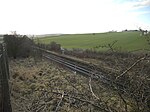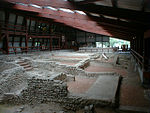Crockenhill F.C.
1946 establishments in EnglandAetolian League (football)Association football clubs established in 1946Football clubs in EnglandFootball clubs in Kent ... and 5 more
Greater London LeagueKent County LeagueKent Invicta Football LeagueSouthern Counties East Football LeagueUse British English from February 2015
Crockenhill Football Club is a football club based in the village of Crockenhill near Swanley in Kent, England. Affiliated to the Kent County Football Association, the club are currently members of the Kent County League Premier Division and play at Wested Meadow.
Excerpt from the Wikipedia article Crockenhill F.C. (License: CC BY-SA 3.0, Authors).Crockenhill F.C.
Eynsford Road,
Geographical coordinates (GPS) Address Website External links Nearby Places Show on map
Geographical coordinates (GPS)
| Latitude | Longitude |
|---|---|
| N 51.381712 ° | E 0.1771 ° |
Address
Crockenhill FC
Eynsford Road
BR8 8EH , Crockenhill
England, United Kingdom
Open on Google Maps






